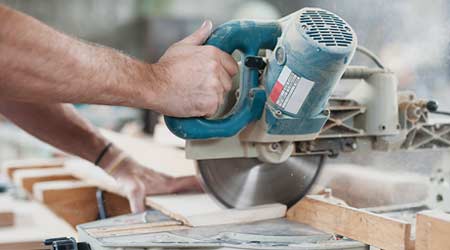 Three key factors affect the productivity of front-line technicians when it comes to power tool use: performance, utilization and methods.
Three key factors affect the productivity of front-line technicians when it comes to power tool use: performance, utilization and methods.Specifying Power Tools That Improve Productivity
Understanding jobsite needs, as well as tool features and functions, put greater efficiency in the hands of technicians
New-generation drills, drivers, and saws put more power, versatility and durability than ever in the hands of front-line technicians in institutional and commercial facilities. But to maximize these performance characteristics, maintenance and engineering managers need to select tools that meet technicians’ expectations.
By identifying technicians’ power tool needs, as well as understanding power tool features and functions, managers are much more likely to make decisions on power tool specification that help technicians complete tasks more safely and efficiently.
Tools of productivity
Managers have to stay within budget while still tackling the backlog of work that bedevils even the best departments. Unfortunately, the numbers often work against them. Consider this data.
Average maintenance technicians’ pay in the United States is $17.57 per hour. Add 50 percent in benefits such as healthcare, workers compensation, shift differential, and vacation pay, and the total annual pay is $52,700, excluding overtime. And compensation is growing at a rate of 2.8 percent per year, according to Bureau of Labor Statistics.
Today’s high employment most certainly means increased labor costs as employers compete to fill vacant positions in a tight labor market. The best and only permanent way to offset these wage increases and stay up with the competition is to increase productivity at a greater rate than wages.
This goal is definitely doable. It can happen when managers and technicians partner in the search for and implementation of method improvements, and savvy specification of portable power tool is one essential strategy. Three factors affect technician productivity are performance, utilization, and methods.
Performance refers to the pace of technicians while working, or the skill and effort applied to the task. Utilization is the amount of clocked-in time spent working productively. And methods comprise the tools and motions technicians use to do the work. The better the tool and the more efficient the motions, the higher the productivity.
Many work management studies have shown that of the three factors, the greatest improvement comes from improved methods. At most, performance can be increased by 25 percent. For utilization, eliminating delays and non-working time between jobs has about the same effect.
The only limit to improved productivity from better methods is the creativity used when searching for a better way, often yielding improvement of 400 percent. The most important needs related to technicians’ power tools are tools that put highest productivity in their hands.
Another contributor to productivity involves letting power tools do the work, which means technicians must exert less effort to complete the task. They can work at a good, sustainable pace throughout the shift without drawing on energy reserves and eventually working at a slower pace. When such productivity gains are factored into new tool savings-versus-cost calculation, they show that these purchase decisions are very wise ways to spend available, limited budgets.
Related Topics:











